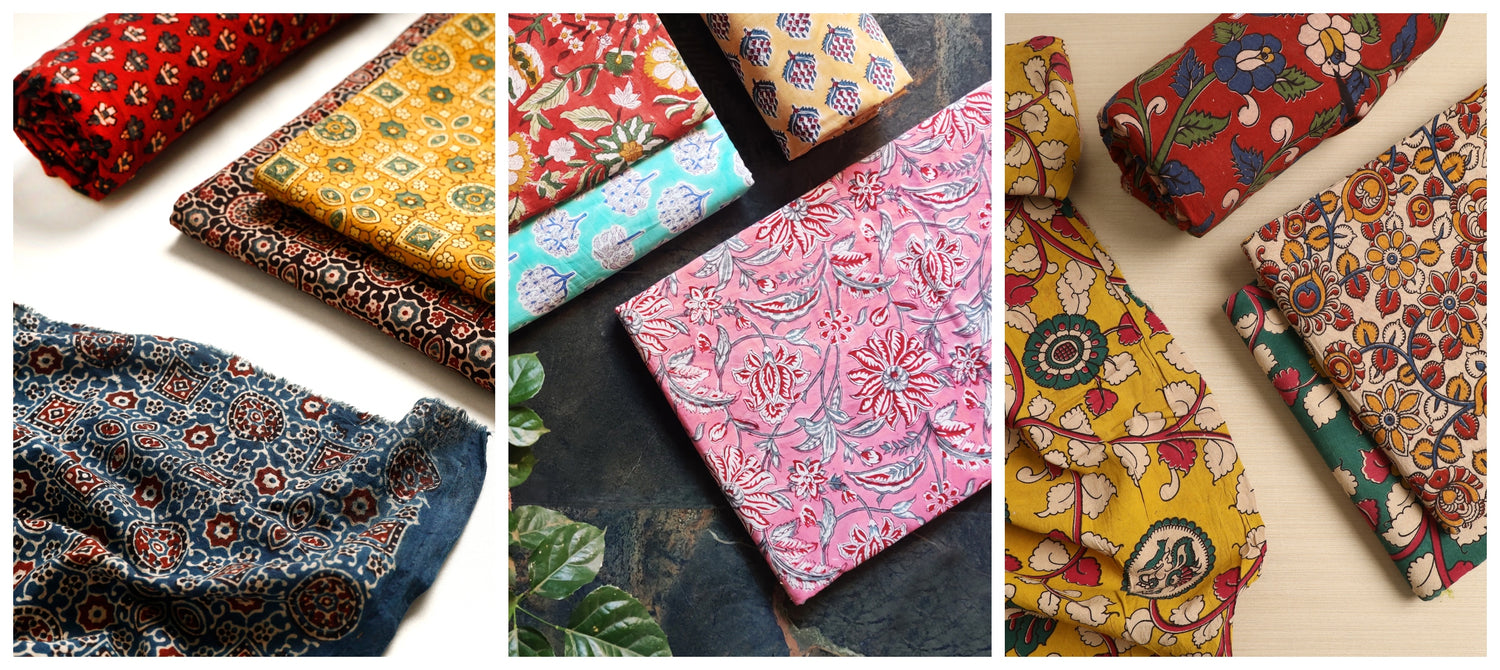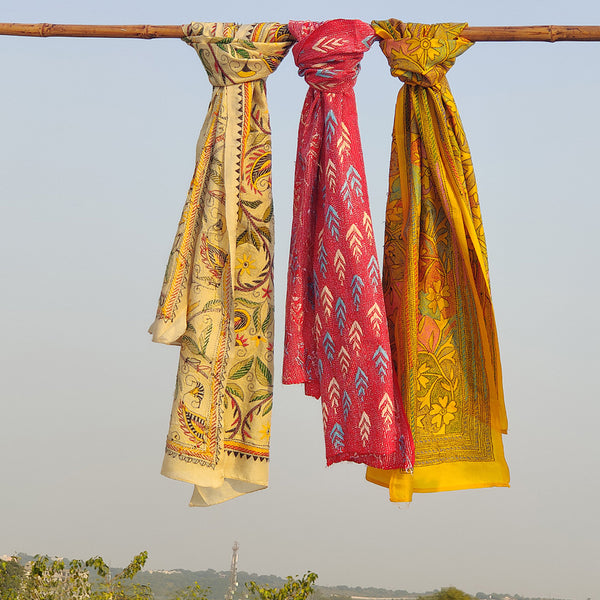Block printing is one of the most unique ways of printing patterns and is done by using engraved wooden structures or blocks, which enable the uniqueness of the method.
Known to be one of the slowest ways of printing on textiles and fabrics, it is also one of the earliest and simplest ways to do the same. Artisans perform this art themselves by hand, and hence it results in some of the highest artistic and creative patterns and designs, which may not have the same effect as other printing methods.
One such well-known and highly acclaimed method of printing is the Sanganeri Art method of block printing. Originating in the Sanganeri village of Rajasthan, it has been in use for almost five centuries and was recorded to have started somewhere between the 16th and 17th centuries. Even among the crowd of the East India Company, the textile with trademark designs and dyes started being exported quite often.
This art form rarely required any formal training and was learned through observation and practice, generation after generation. Sheesham or Teak wood are the main materials which are used to make the block, commonly known as Rekha, for printing, while the filler blocks are called Datta. Once the wood is seasoned and made fit for the printing process, the artisans carve and engrave them at their discretion, based on the designs they would like to create for their chosen textiles. The carving is done using various types of chisels and tools, of assorted shapes and designs, after which the block is soaked for a few weeks which assists in softening the grains of the wood piece. This step helps in ensuring that the color and design that is to be transferred to the cloth occurs evenly and deeply. Wooden blocks work for up to 800 meters of cloth.
Another variant of the block that is used is metal which is made by hammering metal strips into thin strips, which are then engraved into a wooden block. The designed pattern is etched on the wood block, and the metal strips are hammered into it. The designs are more intricate and detailed with lines that are sharp and last longer than a wooden block.
Traditional Sanganeri printers used natural dyes, which were obtained from sources like turmeric for yellow, and black from rust iron, and blue dye from indigo plants. Presently, with the growing demands in the business and changing times, synthetic and chemical dyes are the go to option that is used. This switch has also helped artisans in becoming more versatile with their patterns and combinations of the colors that are used for the textile.
Apart from Sanganer, there are some other villages in Rajasthan that perform the block printing tradition such as Bagru, Akola, Jodhpur, and Barmer. Bagru prints, although along the same line, are quite contrasting from Sanaganeri prints. Practiced by the Chippas community, Bagru prints are done using solely natural colors, and no chemicals and are done mainly on indigo or blue fabrics, as compared to Sanganeri which is more versatile in its cloth and dye selection. Another key difference is the use of fine lines and detailing with more sober colors with floral patterns, while Bagru prints consist of geometric and animal patterns with bold and dark motifs as the designs. Done on an off-white or pure white background, Sanganeri prints differ from the Bagru prints as they are done on blue or indigo backgrounds.
When put in water, Bagru prints result in giving a reddish tone whereas Sanganer prints give more of a darker print. Different as they may be in certain departments, both the prints are equally beautiful and highly in demand by markets and consumers in today's times.
Some of the techniques used for Sanganeri prints are the Resist method, where a layer of clay or wax is laid on the cloth to resist the natural dyes that the fabric is dipped in, much like the Dabu or Iha method, or the Discharge method, which uses bleach while the re-printing process is in action, to rid the fabric of any prior prints. The Rogan method is a more elaborate process that is reserved for the cloth made for royal and elite customers of the business, where the outlines of the designs printed on the cloth are overprinted or plated with gold. With increasing advances in the industry, this method has become more accessible and is comparatively cheaper for the artisans, as previously gold could not undergo severe or repeated washing, and hence was used only for special or elaborate fabric pieces.
Traditionally Sanganeri prints were done only on plain white cloths, but as the years have progressed, they have brought the designs to more fabrics such as silk and organza. It is used to make items such as sarees, kurtas, scarves, and dupattas as well as household cloths such as bed covers, quilts, blankets, and a wide array of options as well.
This versatility has led to it being more widely accepted and to a larger audience with many uses. The vibrant and traditional prints give an ethereal feel to the fabrics, which entices the customers. Hence, Sanganeri prints are one of the most famous and well-known branches of the art of block printing.
You can check products with Sanganeri block printing on iTokri, here.
Written by,
Nishtha Lall
Blogs you might also like:
Kahani' of The 'Khandani' Banarsi Wooden Artery
Magnificent Pattachitra Paintings of Orissa
Maharashtrian Tribal Art - Warli Paintings











Leave a comment (all fields required)